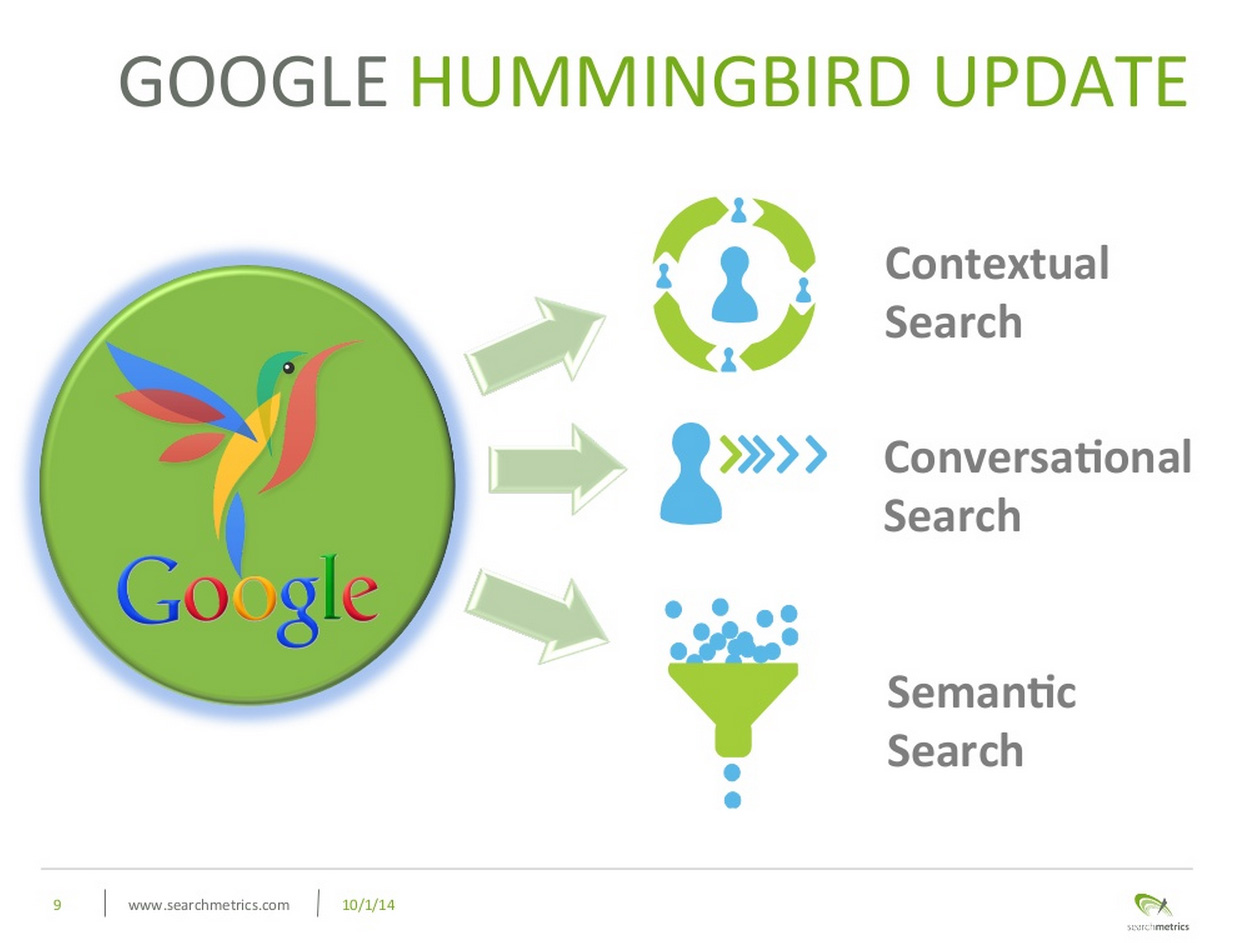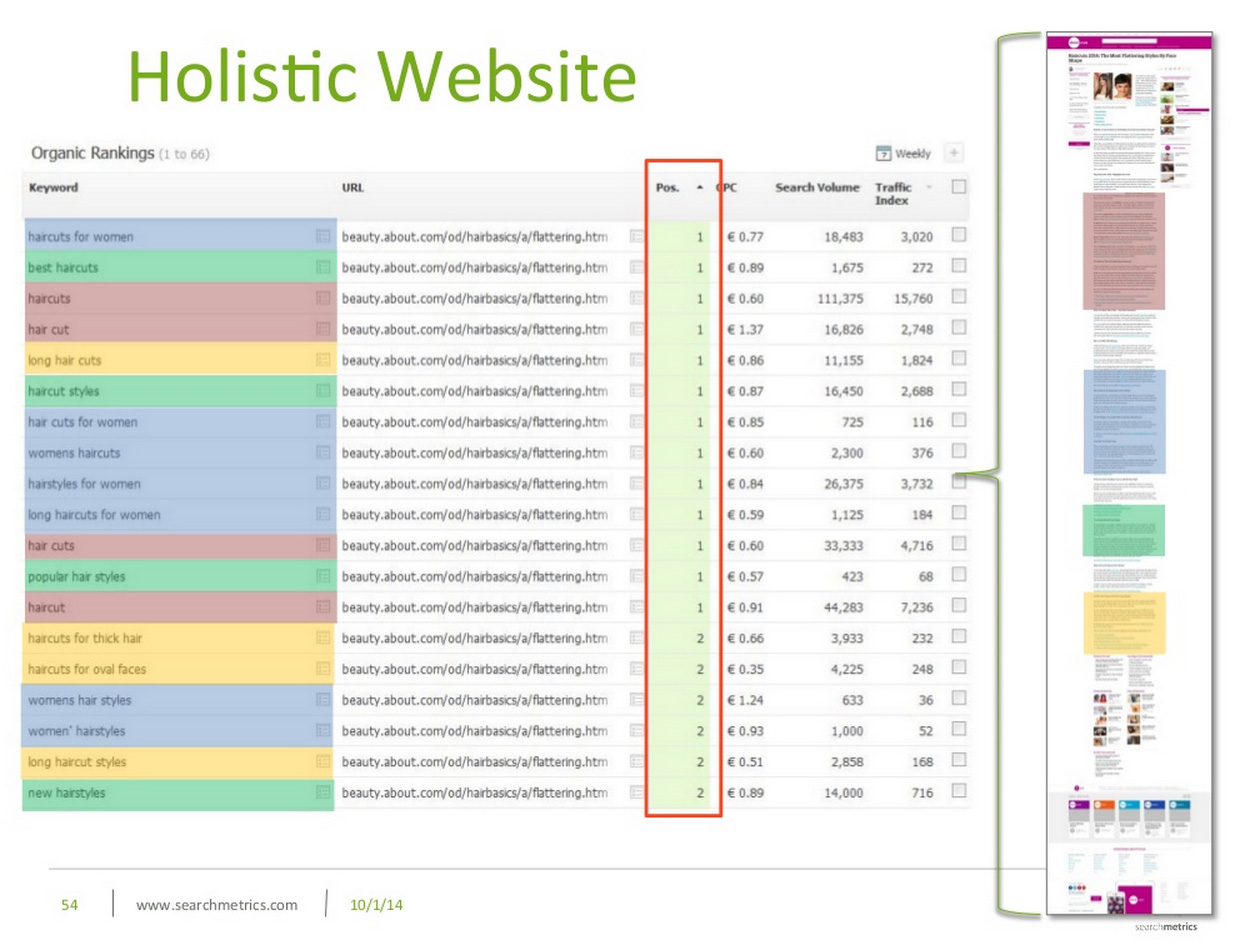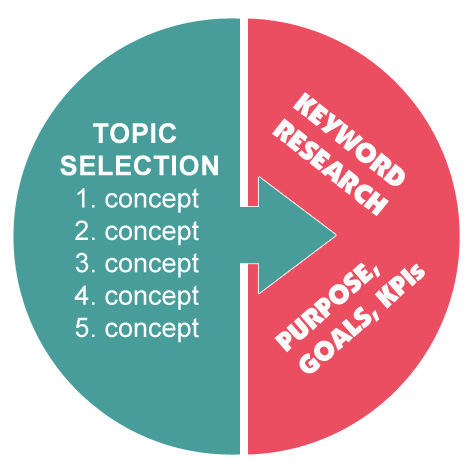How To Work Relationships and Concepts Into Your Copy
It’s an exciting time in the SEO industry. Many things have changed – by now much of the industry has acknowledged and begun an evolved form of SEO practices. Google has hit adolescence; it’s entered into Junior High School.
The folks at Mountain View made the conscious decision that keywords alone couldn’t deliver them the results they wanted to see (ahem, “their users wanted to see”). Google tried some different modeling but ultimately came around to semantic search (that is, using semantic technology to refine the query results). Now I said much of the industry has picked up on it. Not all. I still see a lot of pretending Panda, Penguin and Hummingbird never happened. That’s unfortunate for innocent clients around the world. But for most of us probably reading this, we’re students of a new lexicon. With words like “triples” and “entities” and “semiotics” and “topic modeling.”
Rand Fishkin did a phenomenal WBF called What SEOs Need to Know About Topic Modeling & Semantic Connectivity. This truly made my month. At Greenlane, we’ve been producing what we internally call “Hummingbird Content” for our clients. It’s very much related to Rand’s WBF, and very tied in with our own February 2014 post called Optimize NOW For Entities and Relationships and July 2014 post called How Entities and Knowledge Cards Can Help With Query Intent. Personally I was fascinated with Latent Semantic Indexing, though it didn’t really seem to ever evolve (or maybe it hit its limitations?)… but I believe Hummingbird could be the reboot I’ve been waiting for. This is Google’s biggest AI improvement. This is Google starting to finally understand the intent (after over a decade of SEOs optimizing as they could). This is Google’s second brain starting to evolve and merge with its core functionality. Maybe the world didn’t get flying cars yet, but I think we are starting to get the Google results we want.
The Bigger Picture
Winning knowledge cards for clients is fun, and has been valuable for a few of ours. But the knowledge cards are only a product overlay of what Google is now starting to comprehend. It’s (in a large part) about relationships. In this regard different than the link building kind, but related to meaning and language learning. If SEO is about helping Google recognize the value, it’s far time we move past just writing for users and keywords, and start writing for users, keywords, topics, and relationships. We can use everything at our disposal that we think ties in (until more testing or admissions from Google steer us in another direction), from schema to Freebase to writing to data analysis – put it all into your SEO. Marcus Tober did a presentation at SMX East 2014. It was the best demonstration of Hummingbird optimization I’ve seen yet, with help from a stage-setting slide:  Marcus’ presentation went on to show data. Lots, and lots of data. Natural you take notice when you see a slide like this:
Marcus’ presentation went on to show data. Lots, and lots of data. Natural you take notice when you see a slide like this:  Make sure you view this presentation: https://www.slideshare.net/SearchMarketingExpo/what-is-hummingbird-andthe-entity-searchevolutionbymarcustober
Make sure you view this presentation: https://www.slideshare.net/SearchMarketingExpo/what-is-hummingbird-andthe-entity-searchevolutionbymarcustober
It’s All Coming Together
Why does Moz and SearchMetrics ranking studies show a correlation between long copy and better rankings? It’s not because of word count. It’s because you’re casting a bigger net to show – and teach – Google about your expertise and topic. If Google (post-Hummingbird) understands a million relationships already, you’re bound to strike a few connections with the ranking algorithm. If you start worrying less about exact match keyword (where, let’s face it, stuffing really didn’t have much effect as of late anyway) and more about the relationships, you’re starting to appeal to the new Google. If you were able to make your entity known (aka Freebase, Wikipedia, etc.), that’s more relationships you’re able to throw into the boil. I’m no data scientist. I’m no Bill Slawski either. But I do think I see the big picture, and it seems pretty clear the direction we should be heading regarding content creation.
So What Do We Do?
Writing content for clients, targeting organic search, has never been a walk in the park (except in the days of text spinners I suppose). Keyword research skills and experience as a writer originally got the job done – if the job were simply getting rankings. We considered the values of evergreen vs. temporal. We considered writing for a single keyword and having lots and lots and lots of SEO landing pages – you know, because “Content is King,” yada yada…”
But content strategy started working its way into the SEO space. These tied to better on-site metrics that may or may not contribute to rankings. For marketers, content’s role in attribution and funnels started to be thought of more critically, with SEO being fully blended. SEOs started meeting with the other marketers in the organization. Thus, the SEO copywriters who got all of this were more successful. Now I argue there’s a new element to add – writing more towards topics and concepts – thus creating relationships to appeal to Google, while never forgetting the keywords and traditional SEO and marketing copywriting prerequisites (above). The handwritten graphic we used in this post is real. In addition to goals, purpose, tone, style, and keywords, we sketch out relationships before we sit down and write. Yup – it’s an added step that isn’t necessarily quick, but it makes such a better piece versus sitting down and hustling out a quickly crafted outline. To somewhat illustrate what we’re currently doing:
50% of our time is to really develop the topic and concepts. Sometimes it’s an existing page that has an existing topic, sometimes it needs to be created or narrowed down. Think of a robust Wikipedia entry – in many cases that’s a great way of looking at topic and concept relationships.
Next, what concepts tie into your meanings? Again, think of a Wikipedia entry – their H2’s can often be seen as concepts related to the topics. In many cases, relationships are naturally born out of this. They come without much effort.
The other 50% goes into expanding out your idea with traditional keyword research (which is more easily inspired by the first half of this exercise. Seriously – try it!). But you still have to tie your topic/concepts into the reason for writing in the first place. What is everything this piece should do? Once you jotted down your ideas (you’ve likely made some changes back and forth as your brain juice started flowing), you’re ready to put pen to paper.
Finding The Concepts And Relationships
In Rand’s WBF he mentioned a tool called nTopic. That was new to us, but we were unable to get it to work at this time. However, we’ve been using the Alchemy API. This company lets you demo their AlchemyLanguage API here (h/t to Matt Brown from Moz for introducing this to me): http://www.alchemyapi.com/products/demo/alchemylanguage/. The purpose of the API is to provide language processing and text analysis for apps that need such a thing. For us, the demo suits our purpose. It’s far from perfect; “directional” is a much more apt word. But I’m a huge fan of directional data over guesswork.
At our first step, we have our topic and a handful of “top of mind” keywords to find relevant pages in Google. Simple enough, find a competitors page (that has a lot of copy) and paste in the URL. Or copy the relevant text and paste that in. Protip – if Google is doing its job well, the first few pages should be good candidates (duh!!!). I tend to find Wikipedia pages work in many cases, but that’s hardly the only stop you should make. Get a few, run them through.
Next, toggle through the options. I like entities, keywords, concepts, and relations. Using the example above, in “concepts” we quickly pick up that Frank Zappa is relevant to Captain Beefheart, The Mothers of Invention, some record labels, and the Synclavier (something Zappa used to compose). Do these sound like relationships that might prove your piece is worthy of Google’s interest? Maybe! Clearly Alchemy API does not know what Google considers relationships, but not only is this an easy way to hopefully get close, but provides great examples of things to include in copy (where relevant to the goal). In other words, Google aside, this just helps make good content.
The relations tab is also quite useful, identifying subject, action (predicate), and object. There are your triples. RDF and semantic web for the win.
Where To Use This
This can be used anywhere there is a need for those squiggly little shapes we call letters. From blog posts to resource centers to brochure pages. Last week I wrote on ISOOSI about mission marketing. I think it works in that marketing approach as well. We do a lot of eCommerce at Greenlane, so we’ve gone so far as to try to beef up category pages this way as well. If you’ve ever heard me talk about SEOing a vending machine, I think this is one great way to go about it. Granted, a somewhat unorthodox and harder sell, but there’s a little valid argument against it. This will help you create a complimentary experience to a page that otherwise typically just serves to act on people’s transactional search with disregard for informational searches.
Hell, everything I wrote about so far in this post went into the creation of this post, in which some of the concepts were really built by visiting alchemy API more than a few times.
As SEOs, we’re still at the very early stages of understanding all this. Things may change drastically, better or worse. We’ve all gone down the “authorship” path and came up empty. But that’s what makes our industry so great – we have a passion for riding the first wave and being early adopters. When our work hits, it hits big. I see absolutely no downside to learning more about topic modeling and semantic search or spending extra time doing some concept discovery. If it does nothing for your SEO, it will at least ameliorate your copy and give your users more quality and value. That can only benefit your marketing goals.
Related posts:











